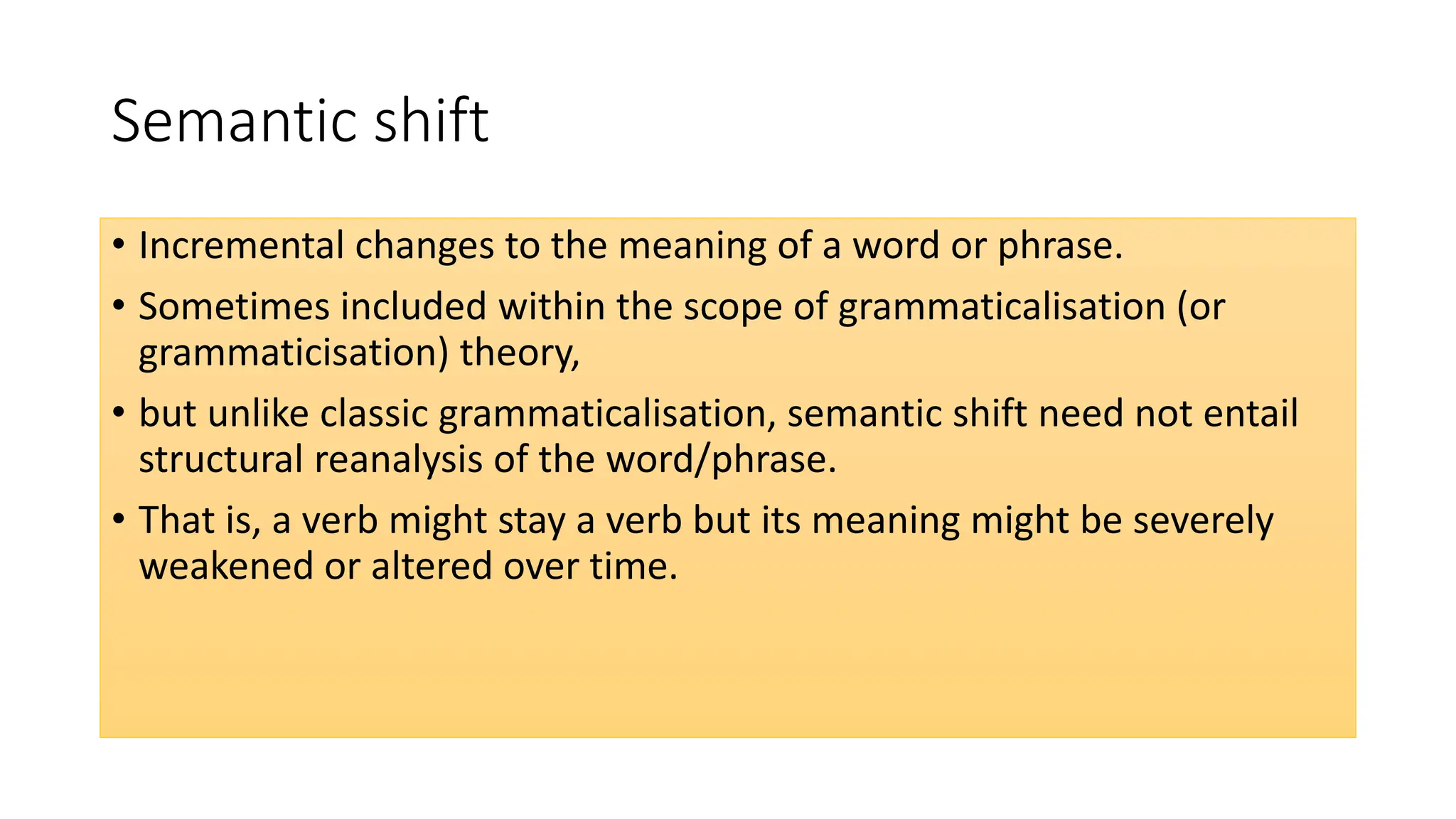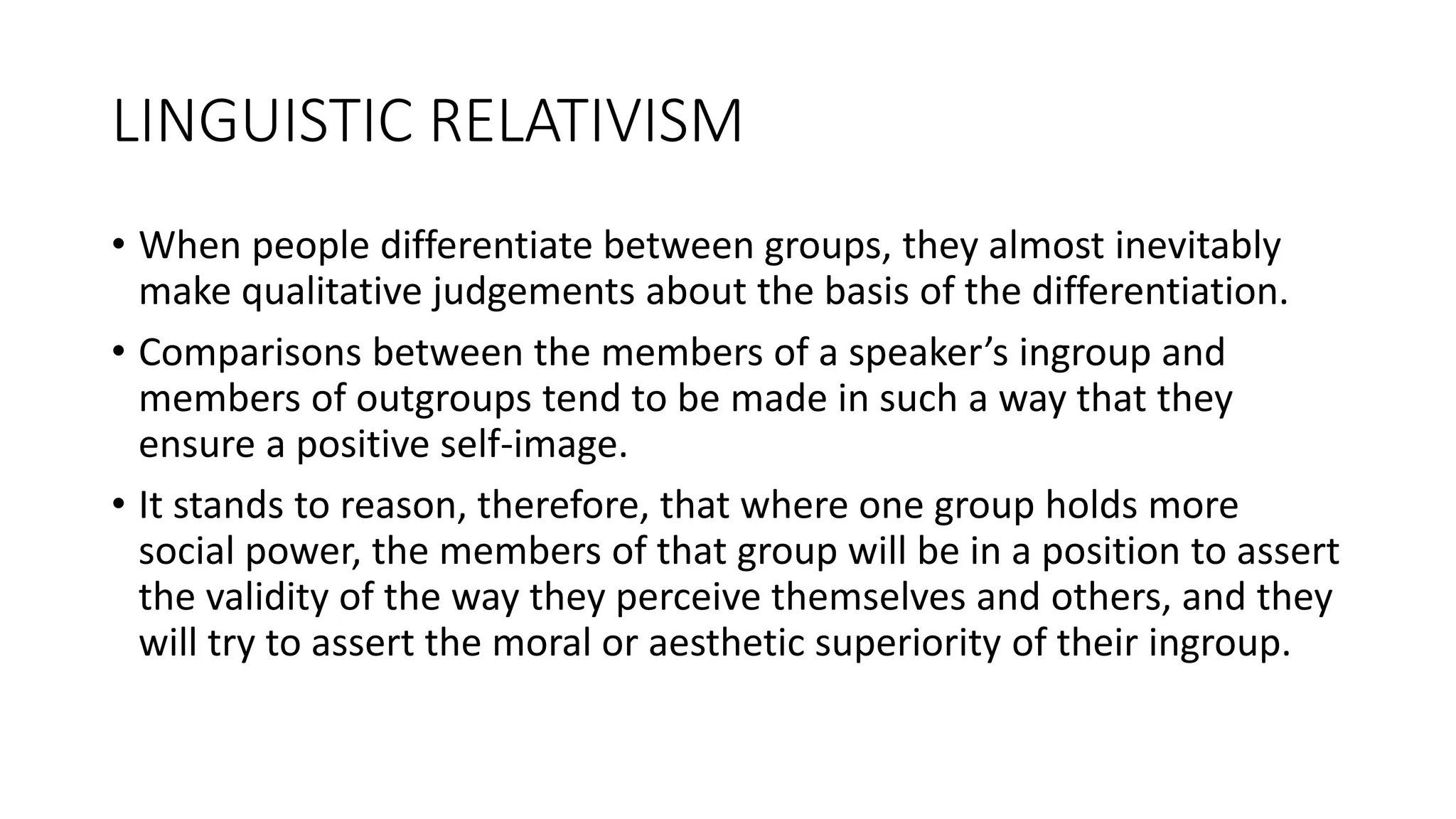Here is a comprehensive note on Language Attitude discussing the key points requested:
Language attitudes refer to the opinions people hold about different languages and language varieties. These attitudes are influenced by a variety of social and psychological factors. Language attitudes can have important social consequences as they impact how people perceive and interact with others.
Gender plays a role in the development of language attitudes. Through a process called semantic derogation, words associated with women often take on more negative connotations over time compared to similar words used for men. For example, terms like "courtesan" have become more derogatory compared to "courtier". This reflects broader social attitudes that tend to view women and feminine qualities in a more negative light.
Con



























